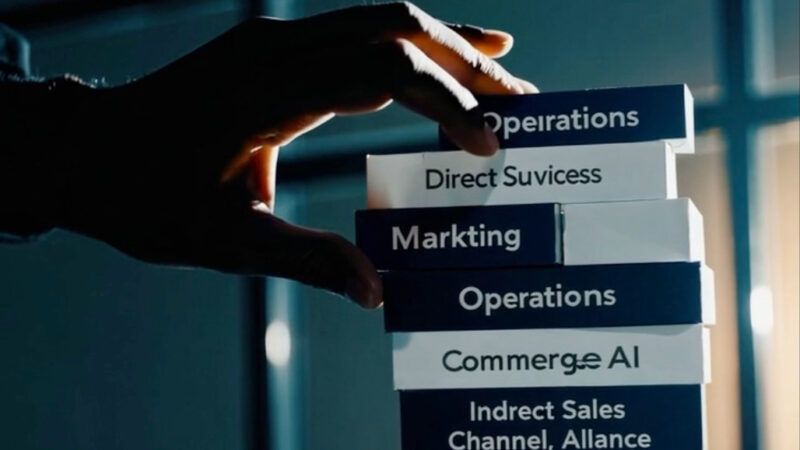Avoid the Spiral
I ventured out of the “big company” environment back in 1998. It was 15 years later when I found myself back in the big company environment – a $13B revenue company after my startup was acquired.
As part of an executive team of 18 at a publicly-traded company, the environment could be considered a lot different when compared to any of the eight startups I was involved with prior. However, the reality is that it is not.
A good company environment is made up of the same factors, regardless of company size.
Even though I find it challenging these days to make time to reflect on the changes I need to make to improve my own leadership….I know that if I don’t, I will fall into a trap…a spiral.
Creating a “good” company environment, or in my case, a good business unit environment, may not be that important when things are going well.
When things are going well, the staff is excited to be working at the company because:
- Their career path is wide open with lots of interesting jobs that naturally open up.
- You, your peers, your family, and even your friends all think you are lucky for choosing and being a part of such a success.
- Your resume is getting stronger by working at a company during its boom period.
- It’s most likely lucrative with variable compensation plans paying off, bonuses being given, equity growing in value.
However, when things are challenging…and your business is struggling…all those reasons become reasons to leave.
The only thing that keeps an employee at a company when things are challenging is that people actually like their job.
Having worked and led staff through the toughest times of company life and death – including things like working for free, working long days and nights, working on weekends – I know what can be asked of a team when times are tough. But no team is going to respond to your requests of sacrifice for long, if they are working in a bad company environment.
In bad company environments, good employees disappear. In highly competitive and quick to change technology companies, disappearing talent starts the spiral.
When your company’s most important assets leave (your top performers), the company struggles to hit its numbers; it tries to backfill its core talent but can’t recruit it fast enough; it misses its milestones; declines in value; loses more of its key employees.
Spirals are extremely difficult to reverse.
So, yes, creating a “good” company environment isn’t that important when things are going well….but it sure the hell IS important when things go wrong.
…and things always go wrong.
I personally come to work every day because of the people first…..then the adrenalin fix I get from the business sector I’m in….and, finally, the technologies and products we can produce to disrupt the market….in that order.
Staying away from the Spiral
In great organizations, people focus on their work and they have almost a tribal confidence that they can get their job done. Good things happen for both the company and them personally.
You come to work each day knowing that your work can make a difference for the organization as well as yourself….motivating you and fulfilling your needs to support the sacrifice – the long hours, the missed kid birthday parties, and the canceled date nights with your spouse.
In poor organizations, people spend much of their time fighting organizational boundaries and broken processes. They are not clear on what their jobs are, so there is no way to know if they are getting the job done properly or not.
In some cases, because of pure will, your star performers will work ridiculous hours and deliver on their promises…but they will have little idea what it actually means for the company or for their careers.
To make it worse, when your star performers voice how screwed up the company situation is, management still denies the problem, defends the status quo, and, frankly, ignores the fact that they are dealing with people…not just quarterly goals, revenue targets, and operating income…again, only something you see in a poor company environment.
So how does one create a “good company environment”. For me it’s as simple as breathing air….it comes down to “telling it like it is” with: 1) transparency, and 2) strong communication….and I don’t mean detailing quarterly results with internal webex all-hands.
I like to personally “go out on a limb” by exposing the truths….by being personally vulnerable….ultimately, leading the team in a way that establishes a level of trust. I do this with a healthy dose of transparency and communication.
And in order to get the level of trust I need, one can’t emphasize the level to which you have to provide transparency and communication…..as a leader, you’ll feel uncomfortable with it when you are approaching the level that truely earns trust.
I have many techniques that I use to empower, not only my senior team, but my entire organization with the proper communication patterns only found in any good company environment….and needed to weather personal and professional storms.
Here are a few examples as I reflect over the past 15 years:
- 1998: 50% marketshare erosion in one year due to changes in the customer ecosystem
- 1999: A dysfunctional leadership team that can’t run the business
- 2000: Dot com bust leading to a 2x increase in sales cycles
- 2001: 911 requiring a 50% staff reduction
- 2002: Your lead customer cancels their largest product line, on which you have bet the whole company
- 2003: You enter into a patent war with your largest customer
- 2004: Your leading acquisition transaction falls through with only months of capital left
- 2005: Your co-founder and CTO loses his 1 and 3 year old sons in a car accident
- 2006: A disruptive player enters the market, fundamentally changing the landscape
- 2007: Your services go offline, crippling your top ten customers and impacting their businesses significantly
- 2008: An acquisition candidate does an “end-around” going after your key engineering talent
- 2009: Your co-founder and CTO gets “cold feet” and can’t commit prior to securing your next critical round of financing
- 2010: The board of directors pulls funding right after you hired the “A-Team” & begin to ramp sales
- 2011: Your product launch is significantly delayed (12 months) due to a fatal flaw in the technology
- 2012: You realize that your original product that was 3 years in the making has to be thrown away
- 2013: Investors back out with only 4 weeks of cash flow left
During this time, my father had heart surgery, my mother was diagnosed with leukemia, my wife had postpartum depression, my oldest son was diagnosed with dyslexia, I was diagnosed with a blockage in my left coronary artery*, we had to sell our perfect home in order to keep the startup funds coming…and the personal list goes on.
My question for you:
Do you have the type of company environment where you have the support needed to weather any business or personal storm?
*False positive, thank god.




